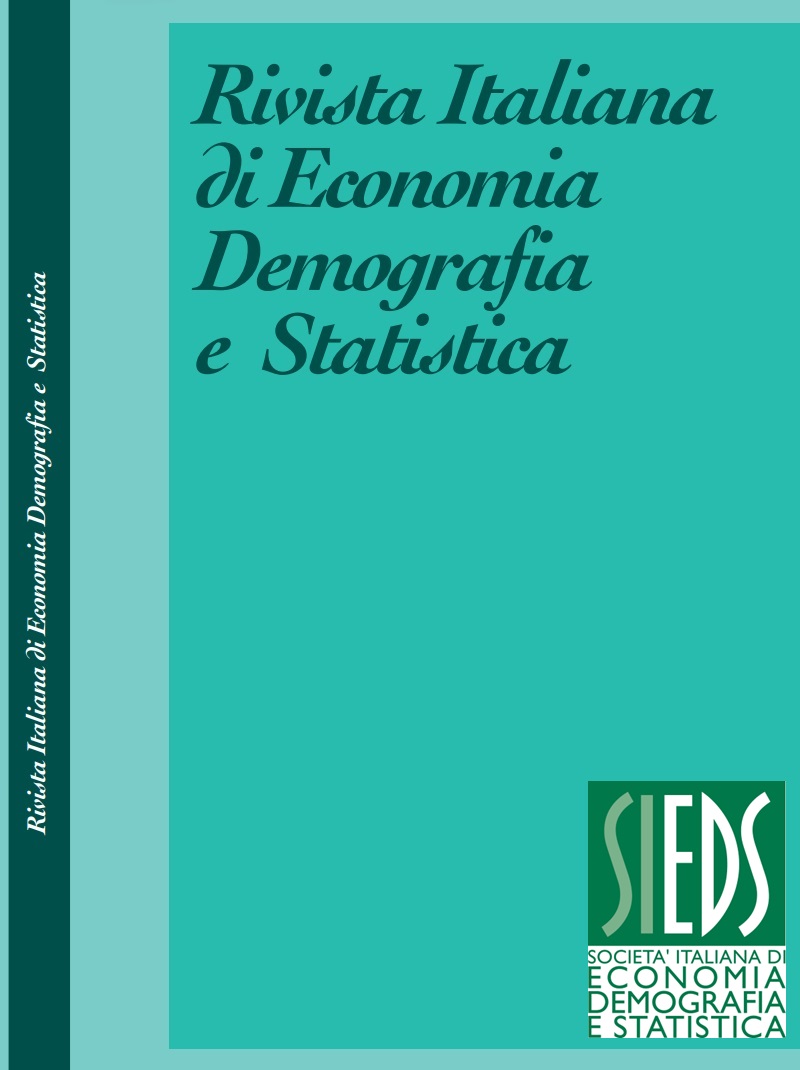Exploring natural experiments: gender of offspring and the challenges of the stopping rules
DOI:
https://doi.org/10.71014/sieds.v79i1.362Keywords:
Natural experiment, Collider bias, Sex of children, Stress, d-separationAbstract
The sex of children has frequently been used in the field of social sciences to conduct natural experiments. The key hypothesis behind this methodology is that the sex of the firstborn (or the first k births) is an exogenous variable, meaning it is not influenced by family characteristics observed before the birth of the children. Recent analyses have questioned the supposed exogeneity of the sex of children, proposing that stress experienced during pregnancy results in higher male embryo mortality, thereby leading to a higher probability of female births. This hypothesis casts doubt on the results reached by studies that have used the sex of children to conduct natural experiments. However, the analyses supporting this hypothesis have not properly considered the problems arising from stopping rules, specifically the tendency of some families to continue having children until a child of the desired sex is born. In this work, we show, using an indirect approach, that if stopping rules are properly taken into account, the sex of offspring is not associated to parental stress.
References
ANGRIST J.D. 1990. Lifetime Earnings and Vietnam Era Draft Lottery: Evidence from Social Security Administrative Records. The American Economic Review, Vol. 80, No. 3, pp.313-336.
ANGRIST J.D., EVANS W.N. 1998. Children and Their Parents’ Labor Supply: Evidence from Exogenous Variation in Family Size. The American Economic Review, Vol. 88, No. 3, pp. 450-477.
BONSANG E., SKIRBEKK V. 2022. Does Childbearing Affect Cognitive Health in Later Life? Evidence From an Instrumental Variable Approach. Demography, Vol. 59, pp. 975-994. DOI: https://doi.org/10.1215/00703370-9930490
CINELLI C., FORNEY A., PEARL J. 2022. A Crash Course in Good and Bad Controls. Sociological Methods & Research https://doi.org/10.1177/00491241221099552. DOI: https://doi.org/10.1177/00491241221099552
DAHL G.B., MORETTI E. 2008. The demand for sons. The review of economic studies, Vol. 75, pp. 1085-1120. DOI: https://doi.org/10.1111/j.1467-937X.2008.00514.x
DUNNING T. 2012. Natural experiments in the social sciences: a design-based approach, Cambridge University Press. DOI: https://doi.org/10.1017/CBO9781139084444
GRECH V., JAMESB W.H., LAURI J. 2018. On stopping rules and the sex ratio at birth. Early Human Development, Vol. 127, pp.15-20. DOI: https://doi.org/10.1016/j.earlhumdev.2018.09.005
HAMOUDI A., NOBLES J. 2014. Do Daughters Really Cause Divorce? Stress, Pregnancy, and Family Composition. Demography, Vol. 51, No. 4, pp. 1423-49. DOI: https://doi.org/10.1007/s13524-014-0305-x
IMBENS G.W., RUBIN D.B. 2015. Causal Inference for Statistics, Social, and Biomedical Sciences. An Introduction. New York, Cambridge University Press. DOI: https://doi.org/10.1017/CBO9781139025751
JACOBSEN R., MØLLER H., ENGHOLM G. 1999. Fertility rates in Denmark in relation to the sexes of preceding children in the family, Human Reproduction Vol. 14, No. 4, pp.1127-1130. DOI: https://doi.org/10.1093/humrep/14.4.1127
MENCARINI L., TANTURRI M.L. (2006). High Fertility or Childlessness: Micro-Level Determinants of Reproductive Behaviour in Italy. Population, Vol. 61, No. 4, pp. 389-415. DOI: https://doi.org/10.3917/pope.604.0389
MCKENZIE D., GIBSON J., STILLMAN S. 2011. How Important is Selection. Experimental vs. Non-Experimental Measures of the Income Gains from Migration. Journal of the European Economic Association, Vol. 8, No. 4, pp. 913–945. DOI: https://doi.org/10.1111/j.1542-4774.2010.tb00544.x
PEARL J. 2009. Causality. Models, Reasoning and Inference. Cambridge, Cambridge University Press. DOI: https://doi.org/10.1017/CBO9780511803161
Downloads
Published
Issue
Section
License
Copyright (c) 2025 Giambattista Salinari, Gianni Carboni, Virginia Zarulli

This work is licensed under a Creative Commons Attribution 4.0 International License.



